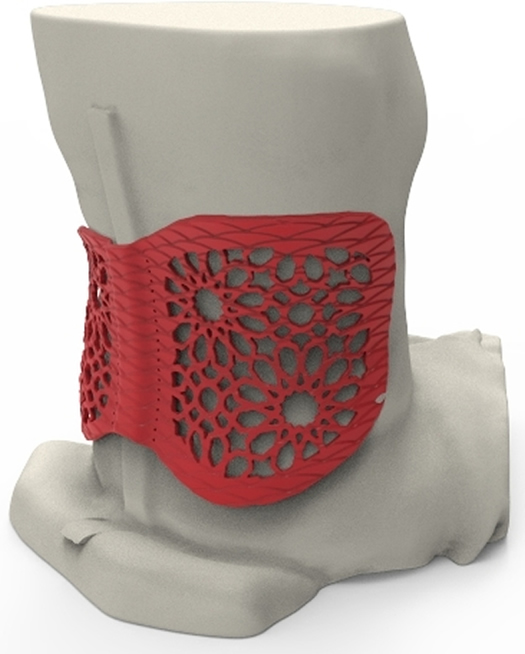3D printed back brace takes fencer to Rio Paralympics 2016
Polina Rožkova, representing wheelchair fencing for Latvia, competed at the Rio 2016 Paralympics this week with the aid of a back brace printed by Baltic3D, a Stratasys reseller and specialist WiDE software.

Polina Rožkova fencing at the Rio Paralympics 2016. Juris Bērziņš Soms
Beau Jackson, 3D Printing Industry September 16, 2016
The support, boasting a stylized ‘butterfly’ shape and ‘botanical’ design, has a custom fit, created using a 3D scan of her lower back. It challenges the conventional small, medium, large sizing of a typical back brace, and was created as a solution to overcome the discomfort and limited movement caused by Rožkova’s existing equipment.

“Throughout my years as a professional wheelchair fencer, I have been looking for an alternative, and most importantly, sports-appropriate lower back brace to allow me to fence and move freely without any restraints or pain,” says Rožkova. “As the sport puts a lot of strain on the back, I also needed a support that could be replaced easily if it broke during training or competition. I’m ecstatic with the result – not only is the 3D printed back brace visually appealing, but it gives me a level of freedom unparalleled to anything I have ever used before. I feel better equipped than ever to achieve my goals.”

| Using a 3D scan of Rožkova’s lower back, Baltic3D designed and printed a back brace customized specifically to her middle spine, overcoming the discomfort and limited movement found in conventional supports. |

Polina Rožkova
The final product was printed in one single build on Stratasys Fortus 450mc Production 3D Printer using Stratasys’ flexible, lightweight Nylon 12 material. It saw Rožkova up against some fierce competition in this week’s preliminaries.
Ranked 8th in the world, Rožkova missed an early victory over Polish quarterfinalist Marta Fidrych by just 2 points. Her greatest match of the competition then saw her up against Chui Yee Yu of Hong Kong, winning with an astonishing lead of 5 points to 2.
Being her first Paralympic games, and a first attempt at creating such equipment, we are excited to see what Polina Rožkova, and advances in 3D printing technologies will bring to Tokyo 2020.
It truly is technology that could change the world, as Andy Middleton, President of Stratasys EMEA, explains: “Polina’s story is one that embodies all the great things about 3D printing and its ability to truly shape lives, being able to quickly 3D print low-cost solutions customized specifically to the person takes us away from a world where we settle for small, medium or large, giving consumers more options than ever before. We are extremely proud to be a part of this project and help Polina overcome a design challenge, allowing her to compete at the top.”
Source 3D Printing Industry
Also see
How a 3D-printed ‘butterfly’ is helping a Paralympian fencer in her quest for gold The International Buisness Times
Customized 3D Printed Back Brace Allows Paralympic Fencer to Compete at the Top Stratasys
